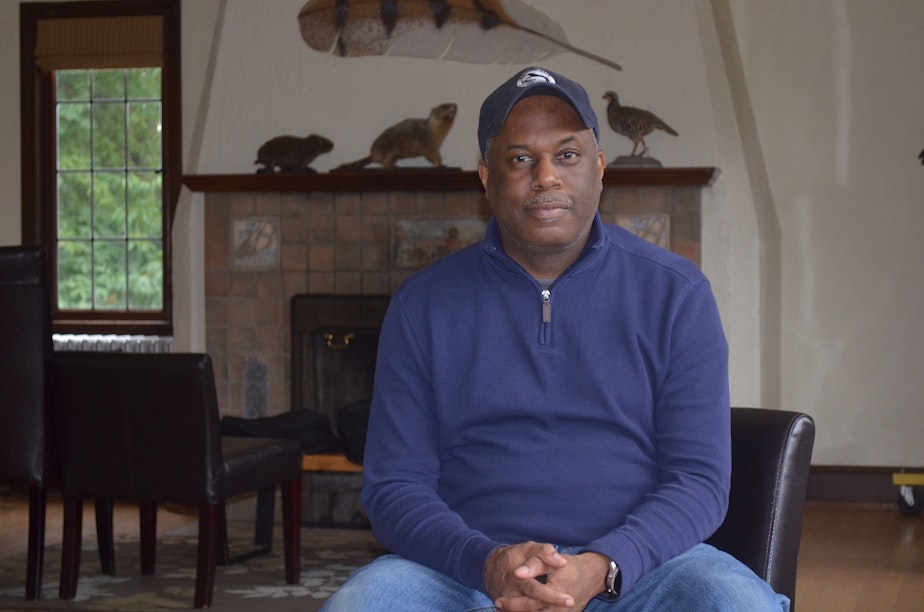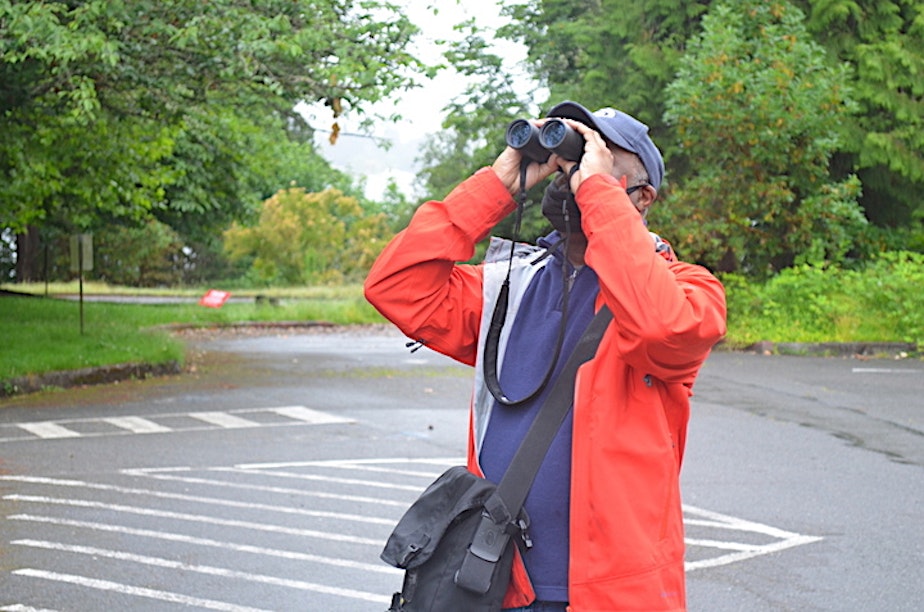The key to racial diversity in the outdoors: 'Making sure that people feel safe'

J
oey Manson seems to know everyone who’s walking in Seattle’s Seward Park at eight o’clock on a drippy summer morning. And Manson doesn’t just know the people: he knows the birds too. He’s headed to an old-growth cedar tree that towers above Lake Washington. There’s an eagle’s nest on the top of that tree.
“Can you see the wings?” he asked. “With that wing movement, that’s probably one of the juveniles just kind of checking out his flight feathers.”
Manson is the director of the Seward Park Audubon Center — and he's the only Black director of more than 40 such centers across the country. As the center’s director, Manson has made it his mission to make sure everyone — especially people of color — feels safe outdoors in Seattle.
For weeks, people have gathered in cities across the country to demand racial justice and protest police violence. The impetus, in large part, behind those demonstrations was the killing of George Floyd by Minneapolis police on May 25.
The same day Floyd was killed, a white woman called the cops on a Black man who was bird-watching in New York City’s Central Park. The man, Christian Cooper, had asked her to leash her dog, per park policy.
Sponsored
In a video that went viral, Amy Cooper (no relation) is seen aggressively confronting Christian Cooper, before stating she would call the cops and tell them "there's an African-American man threatening my life." She then proceeded to do just that.
The situation sparked a larger conversation about the safety of Black people in the outdoors.
Manson said what happened in Central Park wasn’t an isolated incident.
“What we saw there was really a subset of what happens in almost everyday life,” he said. “I had that experience at Whole Foods, I had that experience at Macy’s.”
Manson’s job at the Center is to connect people to birds and nature — and he works to bring as diverse a group as possible into the outdoors.
Sponsored
“What I really try to do is view the experience of someone who’s not necessarily a great birder,” he explained. “The things that captivate me about birding and the outdoors are the stories and the details. And not so much the counting and the sometimes more competitive nature about birding.”

Take these holes Manson sees in a tree trunk: They’re deep, rectangular, and at least three to four inches tall. He said they were made by a pileated woodpecker.
“It looks like a carpenter has come over to your house and chopped out an area for your junction box for electricity because it’s just so neatly cut out,” he said.
“The holes that they create are rectangular like that because they have this beautiful crown. And in order for their head to fit further into that hole, it needs to be cut in that rectangular way so it doesn’t mess up their hairdo.”
Sponsored
Manson grew up playing in the woods outside of Washington, D.C. But it never occurred to him to go out specifically to look at birds.
He got involved in the Seward Park Audubon Center almost by chance about 10 years ago, when he helped them open a nature store.
He said, at the time, he didn’t know anything about birds.
“We had so many phenomenal people on our staff,” he said. “Whenever they had some spare time, they would just grab a pair of binoculars and walk around, and I’d tag along with them. And these people were phenomenal birders, and, you know, I got to learn a lot from them.”
When the Center needed a new executive director, the board chose Manson. Now, he tries to share the stories he loves about birds with others.
Sponsored
To bring a broader group of people to Seward Park bird programs, he partners with organizations like Outdoor Afro and Latino Outdoors.
And he moved the Saturday morning bird walk from 8 a.m. to 10 a.m.
“We fully recognize we’re probably going to see less birds,” he said. “But we certainly have a lot more people, and, really, as a conservation organization, that’s so much more important.”
And Manson opens programs with games that let people know they don’t have to be experts already to participate.
“Making sure that people feel safe, welcome, and not overwhelmed with the experience of birding — that's really just been kind of the goal,” he said.
Sponsored
“And having folks out there talking about birding and having people out there sharing that experience,” he added. “Fortunately, that helps the birds out.”


